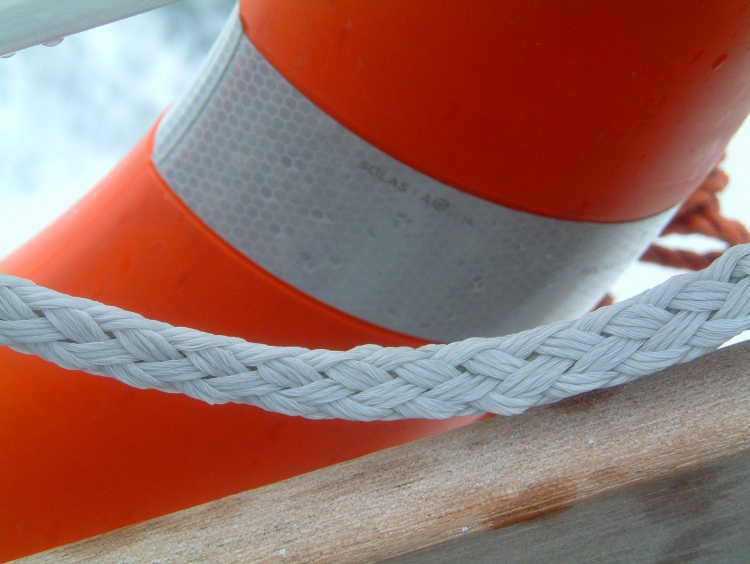One of the regular sections of SWZ Maritime is MARS Reports, reports from the Marine Accident Reporting Scheme. As we receive more of these reports than we can publish in our magazine, we post the other ones online. Read the previously unpublished reports from MARS 234 here.
MARS Reports cover all kinds of maritime incidents such as (near) collisions and groundings to accidents with tools, falling objects injuring crew and accidents with rescue boats. SWZ Maritime strongly believes relaying these incidents may help prevent new accidents from happening.
Incinerator Fire: MARS 201218
During routine watch keeping, the engineer in charge started the waste oil incinerator for burning garbage and waste oil sludge. After about an hour of operation, the ship’s fire alarm sounded and the local fire (hyper mist) extinguishing unit was activated in the waste oil incinerator space. On hearing the alarm, all personnel mustered and the incinerator was stopped.
Result of Investigation
- The atomiser unit’s air nozzle holes were found to be choked with hard viscous sludge thereby restricting the flow of air into the incineration chamber. This condition seemed to have existed for some weeks prior to the incident.
- Waste oil had failed to atomise properly and had collected and spread over the bottom of the combustion chamber and ignited, producing a large quantity of smoke.
- The smoke activated the fire alarm, triggering the local fixed water mist fire extinguishing system.
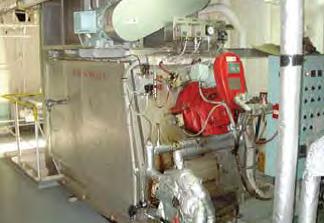
Exterior view of incinerator
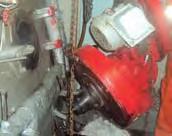
Burner assembly removed and atomiser holes found blocked by unburnt residue and debris
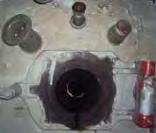
View of burner assembly port showing evidence of oil accumulation
Root Cause / Contributory Factors
- Failure to maintain the incinerator’s burner assembly as per maker’s recommendations; in particular the atomiser nozzles had not been properly inspected and cleaned.
- Failure to fully inspect the combustion chamber, which would have shown that waste oil had accumulated on the bottom from previous burning operations.
- Failure to properly monitor the exhaust during past operations which would have indicated abnormal combustion.
Corrective / Preventative Actions
Engineers’ familiarisation form revised to include training and familiarisation in the use of the incinerator.
A new fleet circular was issued to all vessels, instructing all engineers to:
- Discuss the incident at their next safety meeting.
- Conduct onboard training on proper operation and maintenance of the incinerator, including emergency stop procedures, checks to be carried out prior to and during the use of the incinerator.
- Ensure that the incinerator is cleaned and checked after every use.
- Regularly test all safety devices on the incinerator as well as emergency stops.
Improper Stowage of Oversize Steel Structural: MARS 201219
As a port captain, I recently handled the discharge of a project cargo consignment of oversize steel structurals loaded inside the hold and on the hatch cover of a heavylift cargo vessel. Each lift was between 30 and 40 metres long, and almost identical in height (3 metres) and width (2 metres) and weighed an average of about 55 metric tonnes. Both loading and unloading was done using ship’s twin cranes used in tandem (Gemini) mode.
In line with my past experience, none of the lifts bore proper markings to show the gross weight, slinging method and centre of gravity. Further, the pieces were randomly loaded with some stowed standing on the flanged base (vertical orientation) and others on the side (horizontal orientation). Proper lifting padeyes were welded on both sides of each lift, indicating that they were designed to be lifted and stowed in a vertical orientation only.
The consignment was destined for a project site deep in the hinterland, involving transportation on a single lane road by special trailer for a distance of nearly 900 kilometres from the discharge port. Fearing the trailer could overturn if the lifts were loaded in the vertical orientation, the road haulier insisted that all the lifts were loaded on their sides.
Citing safety reasons, the vessel’s master refused to turn over the vertically oriented pieces with ship’s cranes.
After heated discussion between vessel, charterers, road transporter and the port, all the cargo was unloaded as stowed, with the road haulier arranging for the vertically oriented lifts to be turned over at the storage yard inside the port with three mobile cranes, at his own risk. The vessel duly completed the discharge and sailed. The flipping operation ashore involved serious risk to personnel, cargo and equipment and indeed resulted in some minor damage to the cargo and also the paving of the storage area.
In my opinion, the shippers at the loading port had illogically stowed many lifts wrongly on the side and the ship’s staff had not questioned the stowage nor considered the modalities at the discharge port. The manufacturers were also negligent in not marking the lifts to indicate correct lifting and stowage methods.
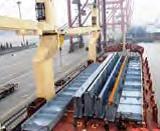
The outboard lifts on hatch cover stowed on their sides
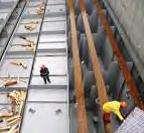
Random orientation of structurals stowed in the hold
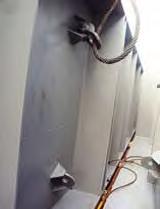
Orientation of dedicated padeyes confirm that the lifts must be lifted and stowed only in the vertical orientation, i.e. on either the upper or lower flange
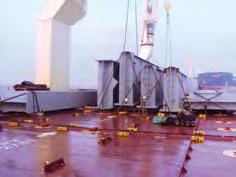
First lift being discharged by twin deck cranes. All the vertically oriented lifts were later turned on their sides by the road haulier on the shore
Faulty Automatic Electric Kettle Caught Fire: MARS 201221
The electric kettles being used on board typically consisted of a cordless stainless steel jug fitted with a plastic base that contained the electric heating element. Power was supplied via a male-female central connector mounted on the base unit, also made of plastic. Following a mid-afternoon coffee break, the crew had left the messroom and had failed to notice that the water in the kettle was still boiling and the automatic thermostat switch had not operated and cut off the power supply to the heating coil. Some minutes later, all the water had evaporated and without any more heat load, the temperature rose high enough for the plastic base and kettle bottom to melt and ultimately catch fire. The strong smell of burning plastic drew the attention of a passing crewmember, who, after seeing the fire and smoke at the base of the electric kettle, quickly disconnected the power cord from the supply socket and transferred the burning kettle and base unit into the adjacent galley sink and turned on the water, successfully extinguishing the fire.
Root Cause / Contributory Factors
- Automatic thermostatic switch malfunction.
- Negligence on the part of the crew in not observing that the kettle was still boiling when they left the messroom at the end of the coffee break.
Corrective / Preventative Actions
- All existing kettles permanently removed from use and replaced with new ones.
- Prominent notices displayed near all electrical appliances requiring the disconnection of power cord from electrical supply outlet when not in use.
- An incident report was sent to the office to be shared with the rest of the fleet.
- Incident discussed at the next onboard safety meeting.
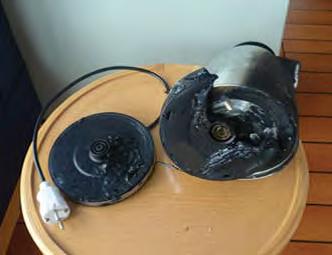
View of fire-damaged kettle and base unit
Acknowledgement
Through the kind intermediary of The Nautical Institute we gratefully acknowledge sponsorship provided by:
American Bureau of Shipping, AR Brink & Associates, Britannia P&I Club, Cargill, Class NK, Consult ISM, DNV, Gard, International Institute of Marine Surveying, Lairdside Maritime Centre, London Offshore Consultants, Lloyd’s Register-Fairplay Safety at Sea International, MOL Tankship Management (Europe) Ltd, Noble Denton, North of England P&I Club, Port of Tyne, Sail Training International, Shipowners Club, The Marine Society and Sea Cadets, The Swedish Club, UK Hydrographic Office, UK P&I Club
Submit a MARS Report
More reports are needed to keep the scheme interesting and informative. All reports are read only by the MARS-coordinator and are treated in the strictest confidence. To submit a report please use the MARS report form (MARS@nautinst.org)


